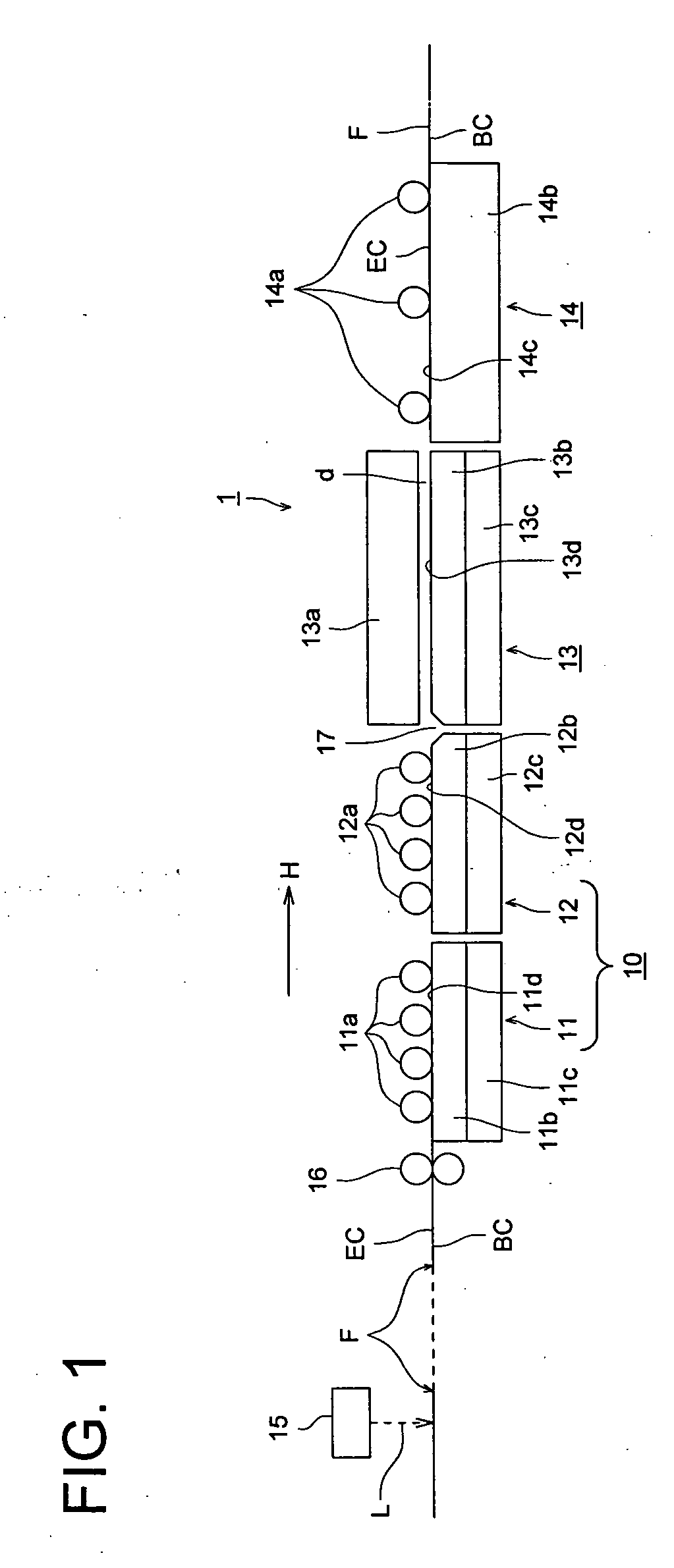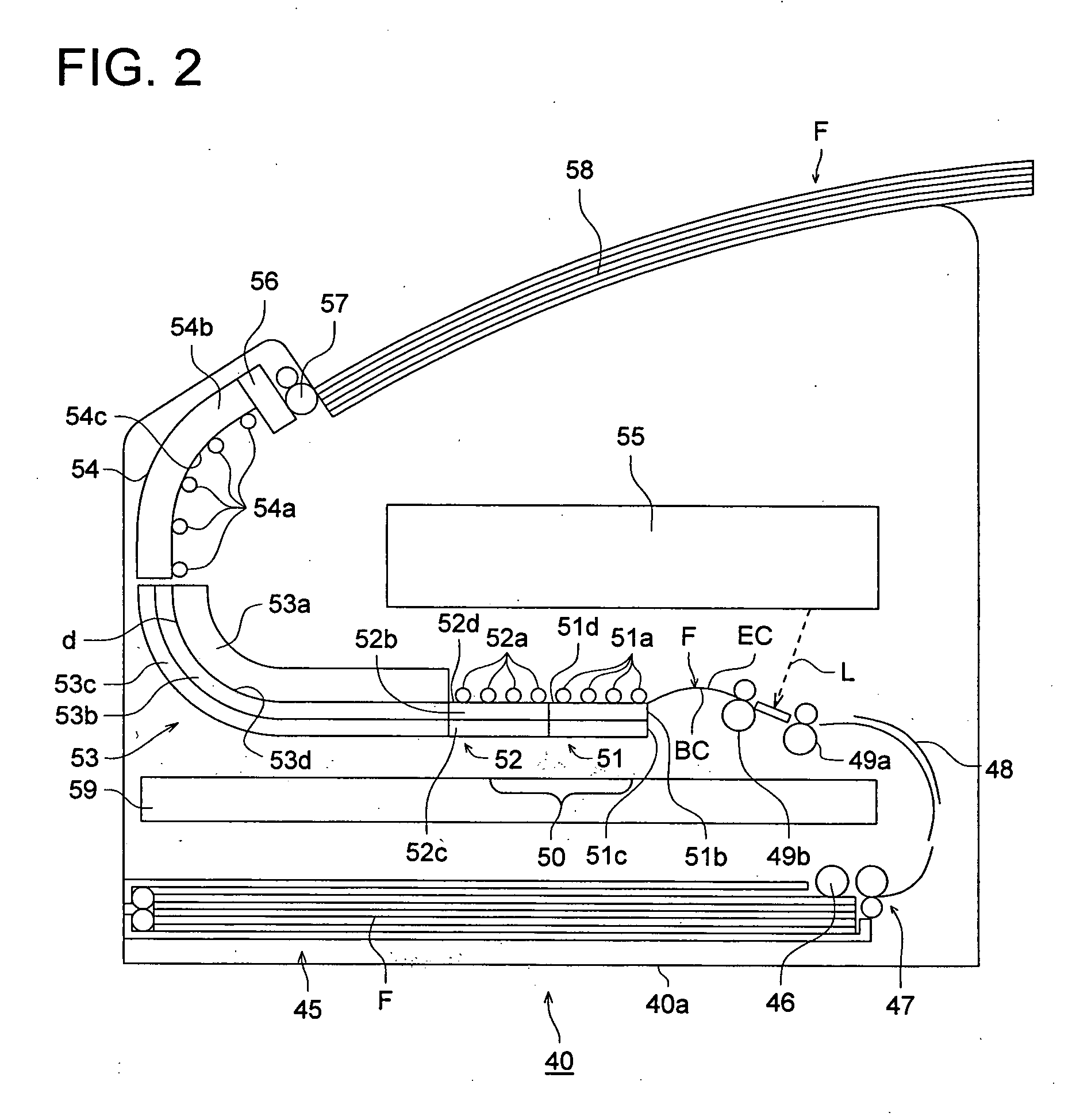Silver salt photothermographic dry imaging material, thermal development method of the same, and thermal development apparatus for the same
- Summary
- Abstract
- Description
- Claims
- Application Information
AI Technical Summary
Benefits of technology
Problems solved by technology
Method used
Image
Examples
synthetic example 1
Synthesis of P-1
[0232] Charged into a reaction vessel were 20 g of polyvinyl alcohol (Gosenol GH18) manufactured by Nihon Gosei Co., Ltd. and 180 g of pure water, and the resulting mixture-was dispersed in pure water so that 10 weight percent polyvinyl alcohol dispersion was obtained. Subsequently, the resultant dispersion was heated to 95° C. and polyvinyl alcohol was dissolved. Thereafter, the resultant solution was cooled to 75° C., whereby an aqueous polyvinyl alcohol solution was prepared. Subsequently, 1.6 g of 10 percent by weight hydrochloric acid, as an acid catalyst, was added to the solution. The resultant solution was designated as Dripping Solution A. Subsequently, 11.5 g of a mixture consisting of butylaldehyde and acetaldehyde in a mol ratio of 4:5 was prepared and was designated as Dripping Solution B. Added to a 1,000 ml four-necked flask fitted with a cooling pipe and a stirring device was 100 ml of pure water which was heated to 85° C. and stirred well. Subsequen...
example 1
>
[0680] A photographic support comprised of a 175 μm thick biaxially oriented polyethylene terephthalate film with blue tinted at an optical density of 0.170 (determined by Densitometer PDA-65, manufactured by Konica Corp.), which had been subjected to corona discharge treatment of 8 W·minute / m2 on both sides, was subjected to subbing. Namely, subbing liquid coating composition a-1 was applied onto one side of the above photographic support at 22° C. and 100 m / minute to result in a dried layer thickness of 0.2 μm and dried at 140° C., whereby a subbing layer on the image forming layer side (designated as Subbing Layer A-1) was formed. Further, subbing liquid coating composition b-1 described below was applied, as a backing layer subbing layer, onto the opposite side at 22° C. and 100 m / minute to result in a dried layer thickness of 0.12 μm and dried at 140° C. An electrically conductive subbing layer (designated as Subbing Lower Layer B-1), which exhibited an antistatic function, wa...
example 2
[0735] Under coating was performed on a photographic support in which the both surfaces of polyethylene terephthalate film, having been colored with the following blue dye, biaxially stretched and thermally fixed, and having a thickness of 175 μm, had been subjected to a corona discharge treatment of 8 W·min / m2. That is, under-coat layer coating composition a-1 was coated at 22° C., 100 m / min, on the one surface of the photographic support so as to make a dry thickness of 0.2 μm, followed by being dried at 140° C. to form a photosensitive layer (an image forming layer) side under-coat layer (referred to as under-coat layer A-2). Further, under-coat layer coating composition b-1 was coated at 22° C., 100 m / min, as a backing layer side under-coat layer, on the opposite surface so as to make a dry thickness of 0.2 μm, followed by being dried at 140° C. to form a under-coat conductive layer (referred to as under-coat layer B-2) provided with a antistatic function on a backing layer side...
PUM
 Login to View More
Login to View More Abstract
Description
Claims
Application Information
 Login to View More
Login to View More - R&D
- Intellectual Property
- Life Sciences
- Materials
- Tech Scout
- Unparalleled Data Quality
- Higher Quality Content
- 60% Fewer Hallucinations
Browse by: Latest US Patents, China's latest patents, Technical Efficacy Thesaurus, Application Domain, Technology Topic, Popular Technical Reports.
© 2025 PatSnap. All rights reserved.Legal|Privacy policy|Modern Slavery Act Transparency Statement|Sitemap|About US| Contact US: help@patsnap.com



